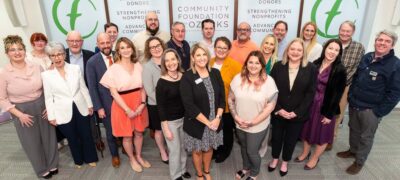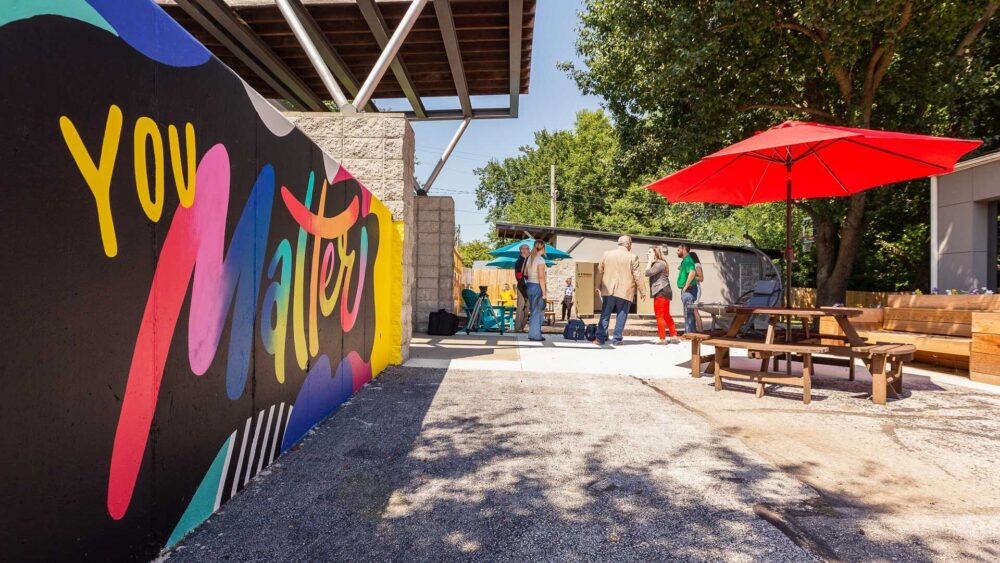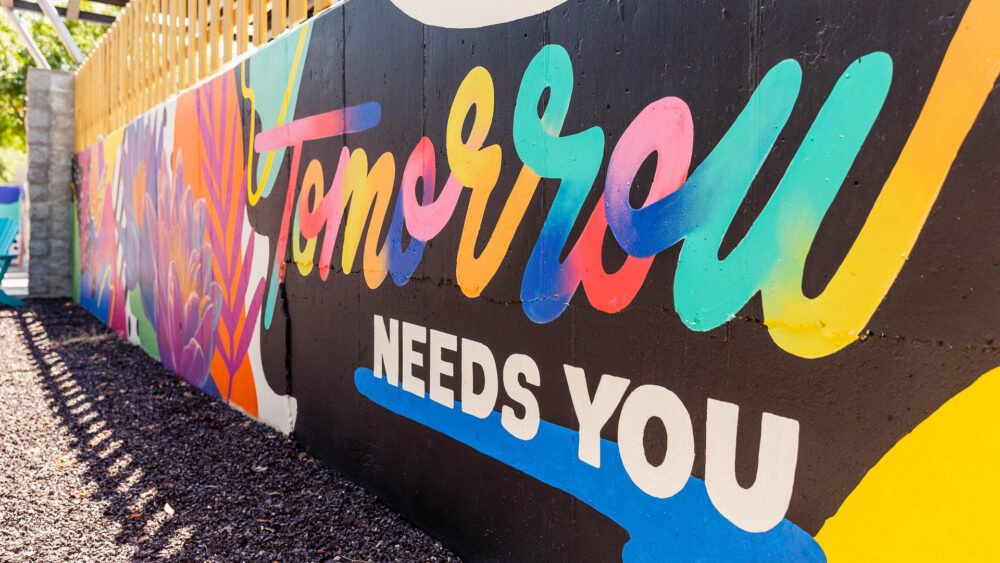CFO Stories
Crowdfunded improvements make a difference for Burrell’s Cherry Street Youth Center
Youth now have an enhanced outdoor place to relax while receiving treatment in Springfield.

Youth now have an enhanced outdoor place to relax while receiving treatment in Springfield.
A better path forward can begin with the right kind of support. Such is true at Burrell Behavioral Health’s Cherry Street Youth Center, a small facility tucked away in central Springfield that provides support for adolescents as they navigate mental and substance-abuse challenges.
Another form of support recently came from community members during 2021’s Give Ozarks Day: Rally for Recovery. The regional push for nonprofit funding, led by the Community Foundation of the Ozarks, resulted in the transformation of a largely empty outdoor space into a place of color complete with murals, workout equipment and places to relax while young patients complete treatment.
When Gabrielle Martin, executive director of the Burrell Foundation, the charitable arm of Burrell Behavioral Health, initially toured the outdoor area, there was little to see. One thing she did see, however, was an opportunity: A chance to improve patients’ experience through transformation of the space.
“When I toured the facilities, this had nothing. It was concrete, it had some graffiti. There was no mulch, there were no chairs. This was like fertilizer storage; it was dilapidated,” Martin says. “We were just like, ‘This is it. We’re going to ask the community to help us fund furniture and fitness equipment and everything to make this a space that they could really love coming out (to use) as a respite.
“We went to the community with Give Ozarks, and we were able to raise over $11,000 for that specific campaign and the bulk of those funds paid for most of the furniture,” says Martin.

A regional push for fundraising in 2021 helped propel fundraising for an outdoor space at Burrell Behavioral Health's Cherry Street Youth Center.
The possibilities of crowdfunding
The CFO’s region-wide day of giving was powered by Cause Momentum, its platform to crowdsource funding for projects across the region. The platform is also available year-round to the CFO’s nonprofit partners and offers a lower platform fee and faster fund distribution than many other crowdfunding options.
Both Burrell Behavioral Health and the Burrell Foundation are two of nearly 700 nonprofit partners of the CFO. Those partnerships begin when a nonprofit agency establishes a fund with the CFO. In turn, the CFO provides a number of resources to the agency, including fund management, fundraising tools, the ability to receive complex gifts and bequests, administrative support, and education and training opportunities.
The partnership has been of special help to the Burrell Foundation as of late. The nonprofit officially began in the 1980s, but was inactive for most of the years since. It only recently revived in light of increasing need and awareness around mental-health services, and Martin says the connection with the CFO played a role in its success.
“CFO was really our first philanthropic partnership as we revived the foundation. It was instrumental for us to have that first initiative be a push that CFO’s name was behind,” Martin says. “That got us in front of not just the community, but potential donors and partnered us frankly with people that ended up giving and partnering with us in the not-for-profit realm.”

Gabrielle Martin, executive director of the Burrell Foundation, and Amanda Mays, director of recovery services at Burrell Behavioral Health, see the benefit the space provides patients.
Seeing real benefits
The Burrell Foundation works to enhance the experience of patients at Burrell Behavioral Health, which serves patients through locations in 18 counties of Missouri. Those efforts create real change for patients like A.J., a teenager from Kansas City who has been at the Springfield facility for around a month.
A.J. began using marijuana when he was around 13, and then expanded into harder drugs. Around a year ago, it also led to him seeking help after he was hospitalized following an overdose.
“It was a shock to my family because they didn’t know that I was using the way I was,” he says. “I ended up in ICU for a week on a ventilator and that was the start of me reaching out for help.”
“I have a lot of aspirations for my life,” he says.

Murals, designed and created by local artists with input from youth at the center, now beautify the space.
Part of that process is receiving help from the staff at Burrell Behavioral Health’s Youth Center, where he says he expects to be for another few weeks. The facility offers numerous levels of support, from an after-school program to residential care. Those efforts are augmented by the outdoor space in ways that complement treatment.
“They love our outside space,” says Amanda Mays, Burrell’s director of recovery services. “The kids love coming out here; the staff love coming out here. It’s wonderful for them to be able to come out and just hang out or sit at the picnic table or play basketball or workout. Everything is very structured here, for good reason. But it’s nice for them to be able to just come outside and do what they want.”
The adolescents at the center are there for a number of reasons, but what Mays is seeing most is fentanyl.
“Kids are using fentanyl as their drug of choice,” she says. “Instead of it being in something, they’re actually seeking that substance out.”
The center’s services are available at no cost to participants. They typically spend around eight weeks in the residential program, says Mays, who notes numerous benefits to the space, ranging from having a place to decompress to an area for family visits.
“One of the things I was shocked to learn when I started in this program was that kids don’t know how to have fun without drugs here,” Mays says, who speaks to other realizations the outdoor area offers, such as the joy of being outside, playing basketball or even simply watching the birds. “‘I really enjoy this mural here, and maybe I can draw something like that,’” Mays shares as another example. “I think there are a lot of ways this space can help.”
By Kaitlyn McConnell, writer in residence for the Community Foundation of the Ozarks